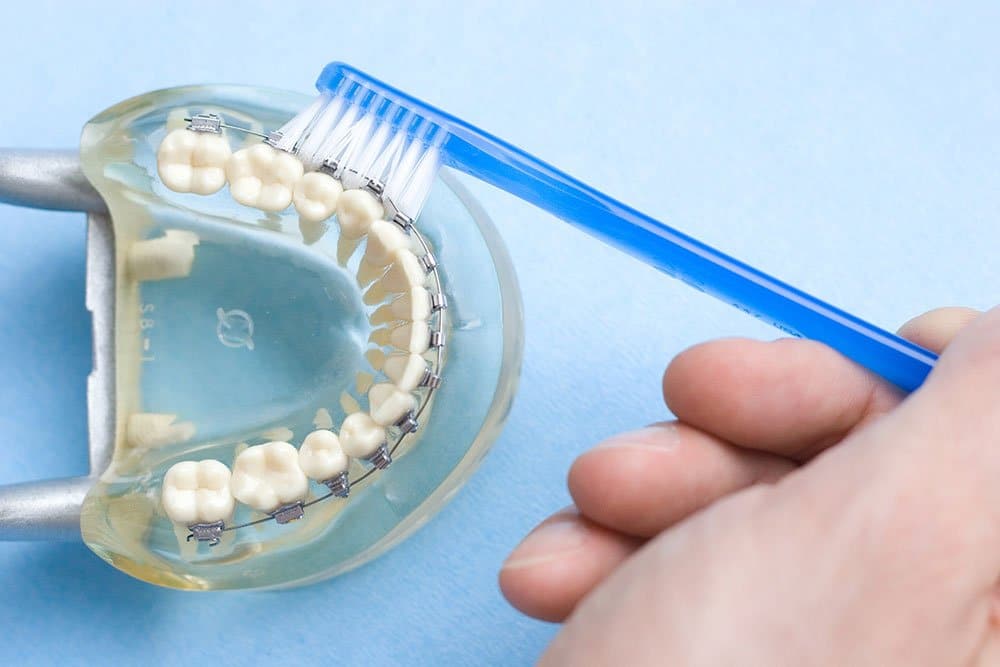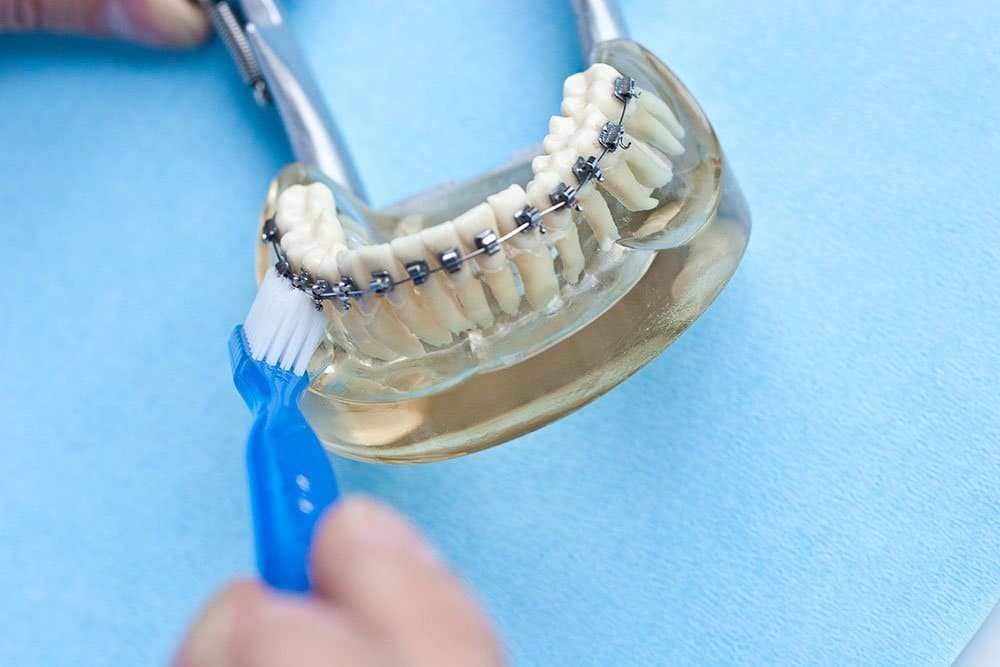Dental Hygiene with Braces
Fixed braces make dental care more complicated as they have corners and angles hard to clean. But just the same basic principles apply to oral hygiene with fixed appliances as to regular oral hygiene. We also recommend the Bass-technique during treatment with brackets (see also teeth hygiene). The only change brushing the teeth with brackets attached is that the brush-head is wiggled 45 degrees downwards and then upwards at every single tooth. This assures that food debris and plaque is removed from all surfaces. Of course dental care with braces attached to the teeth must last take longer than normal dental care.


The ideal duration for brushing teeth without brackets is about three minutes, while you may thoroughly reckon five minutes for cleaning teeth with brackets. Thus, it is unnecessary to brush thoroughly three times a day. After breakfast and lunch, a superficial cleaning is appropriate. Once a day, preferably in the evening, the dental plaque should be removed completely. So you should invest the full five minutes at night before going to bed! While sticking to these rules, tooth damage in connection with the fixed appliances can be almost completely prevented.
Interdental Hygiene with Fixed Appliances
Unfortunately, the use of floss is limited during the treatment with fixed braces because the wires of the appliances get in the way when trying to completely clean the interdental spaces. Of course, you can try to clean the interdental space with regular floss as far as possible. The interdental spaces of the front teeth can be cleaned with Superfloss, a specialized floss with a threader. If you take dental hygiene seriously, your orthodontist should show you how to use dental floss with the help of a threader. This enables you to use dental floss perfectly whilst wearing braces. For adults with wider interdental spaces interdental brushes would be another option, but like floss/threader the choice and use of these should be done in the orthodontic office. These small brushes allow most patients with fixed braces a perfect hygiene of the interdental spaces during treatment. It is convenient to apply these brushes two to three times a week in the evenings.
Interdental Hygiene in General
Every child today knows about the need of brushing its teeth. On the other hand even many adults are not aware of the need for interdental cleaning. Dental floss or interdental brushes are not a luxury product, but are an essential part of dental hygiene. Without adequate means of interdental hygiene neither teeth nor the gums can be kept healthy in the long run. Instead, they are threatened by caries and periodontitis as the interdental space will permanently be filled by bacterial plaque. The choice and use of dental floss and/or interdental brushes should take place in the dental or orthodontic office because the cleaning effect can be minimal or even damage of teeth or the gums can occur with improper technique. For those who strive for dental health it is possible to maintain an adequate interdental hygiene even with braces.
